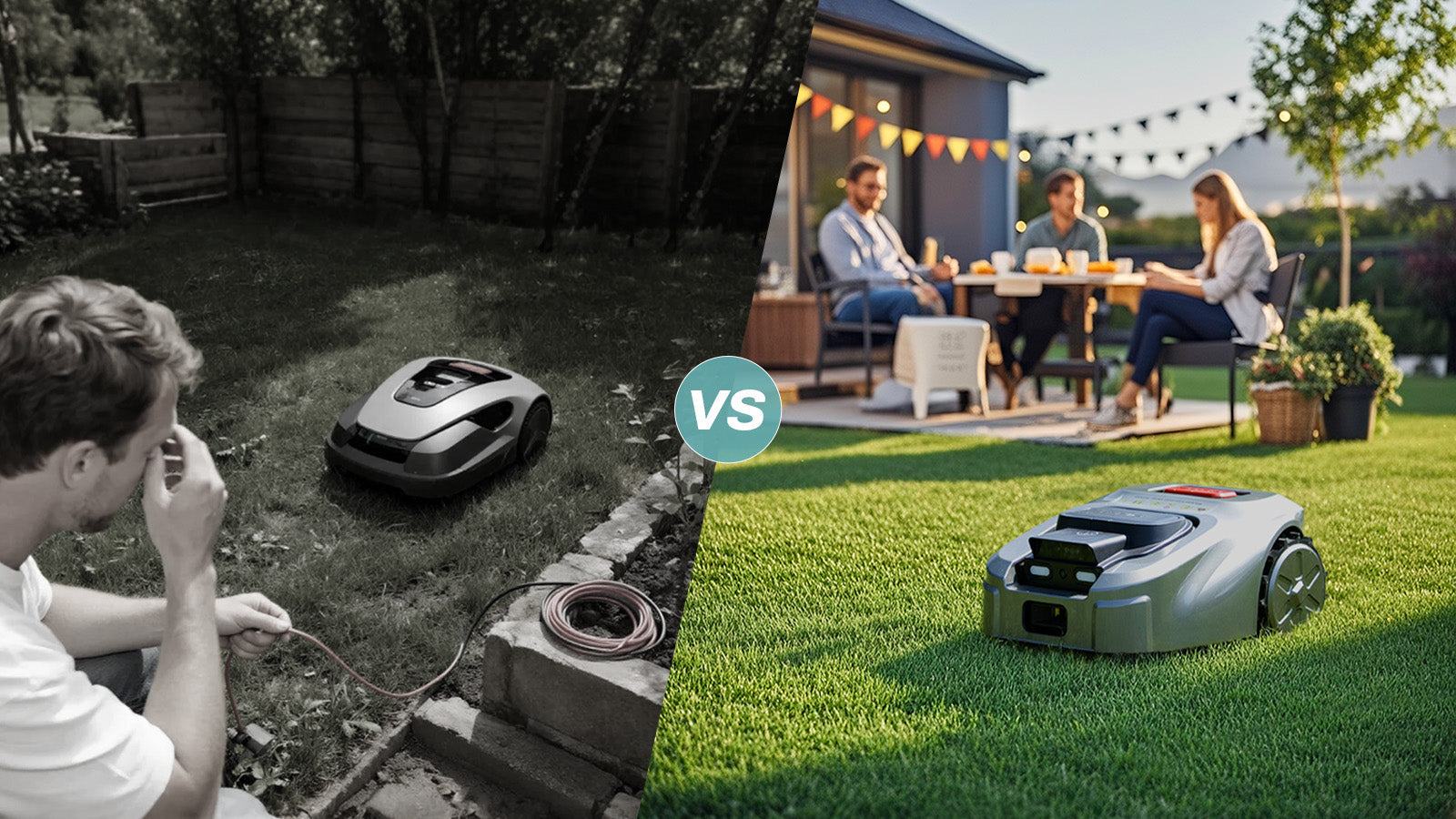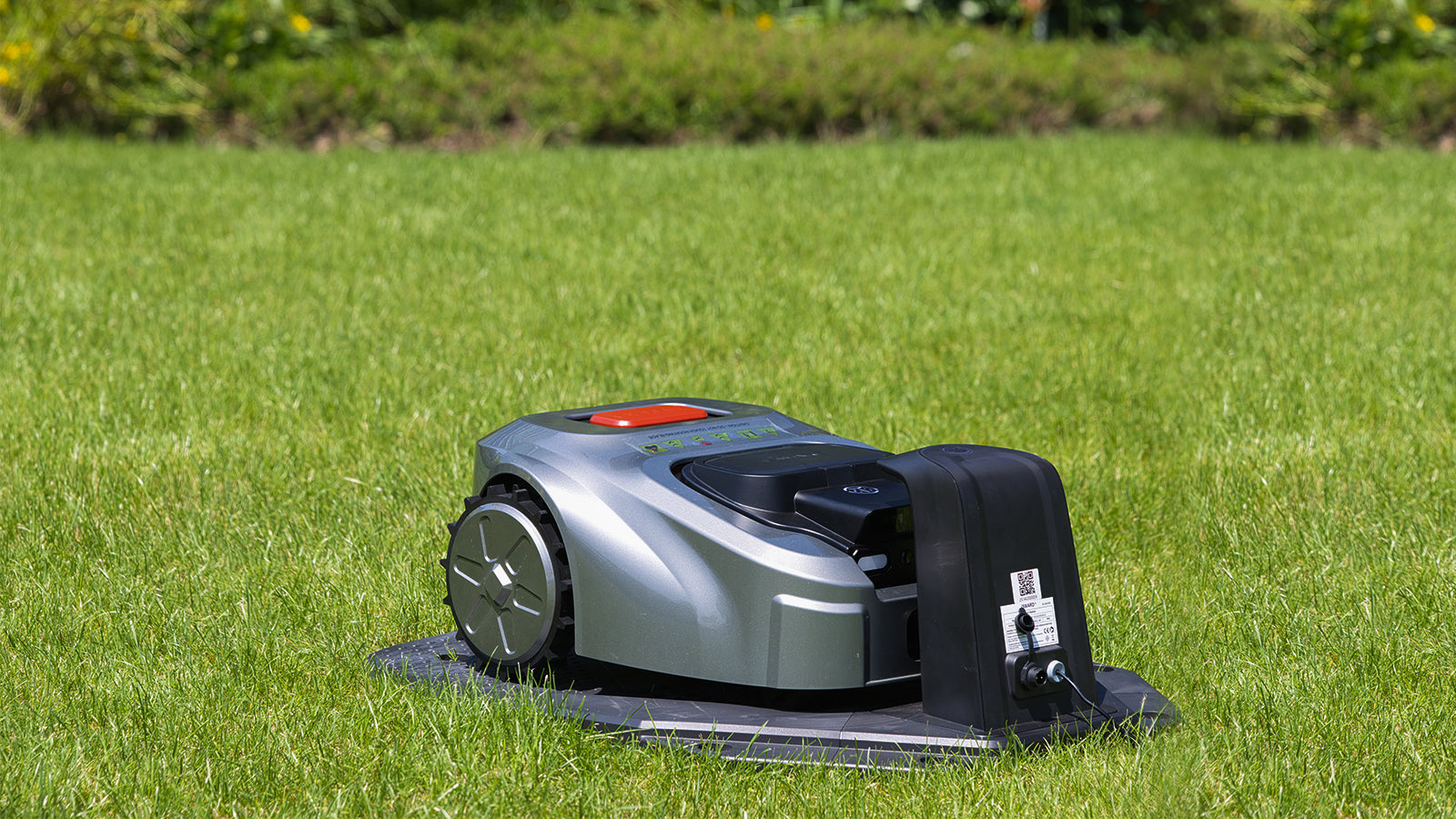Lawn care has changed dramatically: away from noisy gas-powered mowers and buried boundary wires, towards smart, autonomous solutions. Robotic lawn mowers without boundary wires offer noticeable advantages—but not all models are the same. Below, we compare traditional mowers, models with boundary wires, and modern, wireless robots (like the ISWARD G Series). At the end, you'll see for whom a wireless system really makes sense.
1) The advantages and disadvantages of conventional mowers
Per
-
Direct control, easy operation for small areas.
-
No electronic problems with hand mowers.
Contra
-
Loud, often harmful to the environment (petrol engine).
-
High time expenditure or ongoing costs for external services.
-
Not automatic — you have to push/operate regularly.
2) The advantages and disadvantages of robotic lawnmowers with boundary wire
Per
-
Clear, stable boundary (if laid correctly).
-
Easy to diagnose (wire fault vs. device fault).
-
Cheaper entry-level devices often come with a wire.
Contra
-
Installation is labor-intensive (digging/laying).
-
When remodeling the garden, the wire must be re-laid.
-
Perimeter wire limits flexibility and some smart features.
3) Why the future is wireless — Advantages of models without a boundary wire
-
No cable laying : immediate use without excavation work.
-
Flexible zone system : Zones and no-go areas can be created via app.
-
Precise navigation : modern systems combine RTK correction with vision/sensor fusion — high positioning accuracy without wires.
-
Automatic charging & resuming : The device automatically returns to the charging station and continues mowing.
-
Less perimeter maintenance : No wire to break or slip.
4) The ISWARD G-Series — what it really offers (technical & practical)
Note: The following points are based on the official ISWARD manual.
-
RTK + Vision / Sensor Fusion — Centimeter-accurate position correction from a local RTK base station combined with a depth camera (DepthSentry) and IMU/encoder. This reduces GPS drift and ensures more stable trajectories.
-
Boundary-free — no boundary wire required; the area is defined via mapping in the app.
-
App-controlled mapping & zone management — Maps, no-go zones, and mowing schedules can be created and customized via the app.
-
Automatic recharge and resume — returns to the station when the battery is low; resumes mowing after recharging.
-
Obstacle detection & safe navigation — Vision modules detect obstacles; the system adjusts the course.
-
Anti-theft protection & tracking — GPS-based tracking/security features (manual information).
-
Key technical data (brief) : recommended area sizes GS ≈ 1,000 m², GX ≈ 2,500 m²; max. gradient ≈ 30° (57%); protection class for robot IPX5, charging station IPX4; LiFePO₄ battery (22.4 V, 4 Ah).
5) Typical deployment errors — and how to avoid them
-
Beacon/station under trees/too close to walls → RTK accuracy suffers → place beacon free.
-
Inaccurate mapping → mower “runs out” → remap, set no-go zones.
-
Dirty contacts → Docking error → Clean contacts.
These three checks solve the majority of practical problems.
6) Who benefits from a wireless ISWARD mower?
-
Plots of land with irregular shapes, multiple zones or hazardous areas (ponds, flowerbeds).
-
Slopes up to ~30° where precise navigation is important.
-
For those who don't want any digging work/cable clutter and value app control.
-
Commercial service providers who need flexible zone management and fast remapping functionality.
Robotic lawn mowers without boundary wires aren't a trend, but a true technological advancement—provided the solution is based on solid RTK correction, good sensor fusion, and a clean initial installation. The ISWARD G-Series delivers precisely this basic technology: precise positioning, app mapping, reliable docking, and robust obstacle detection. If you want to keep your hands off the lawn and value flexibility—wireless systems are the best choice today.



Leave a comment
This site is protected by hCaptcha and the hCaptcha Privacy Policy and Terms of Service apply.